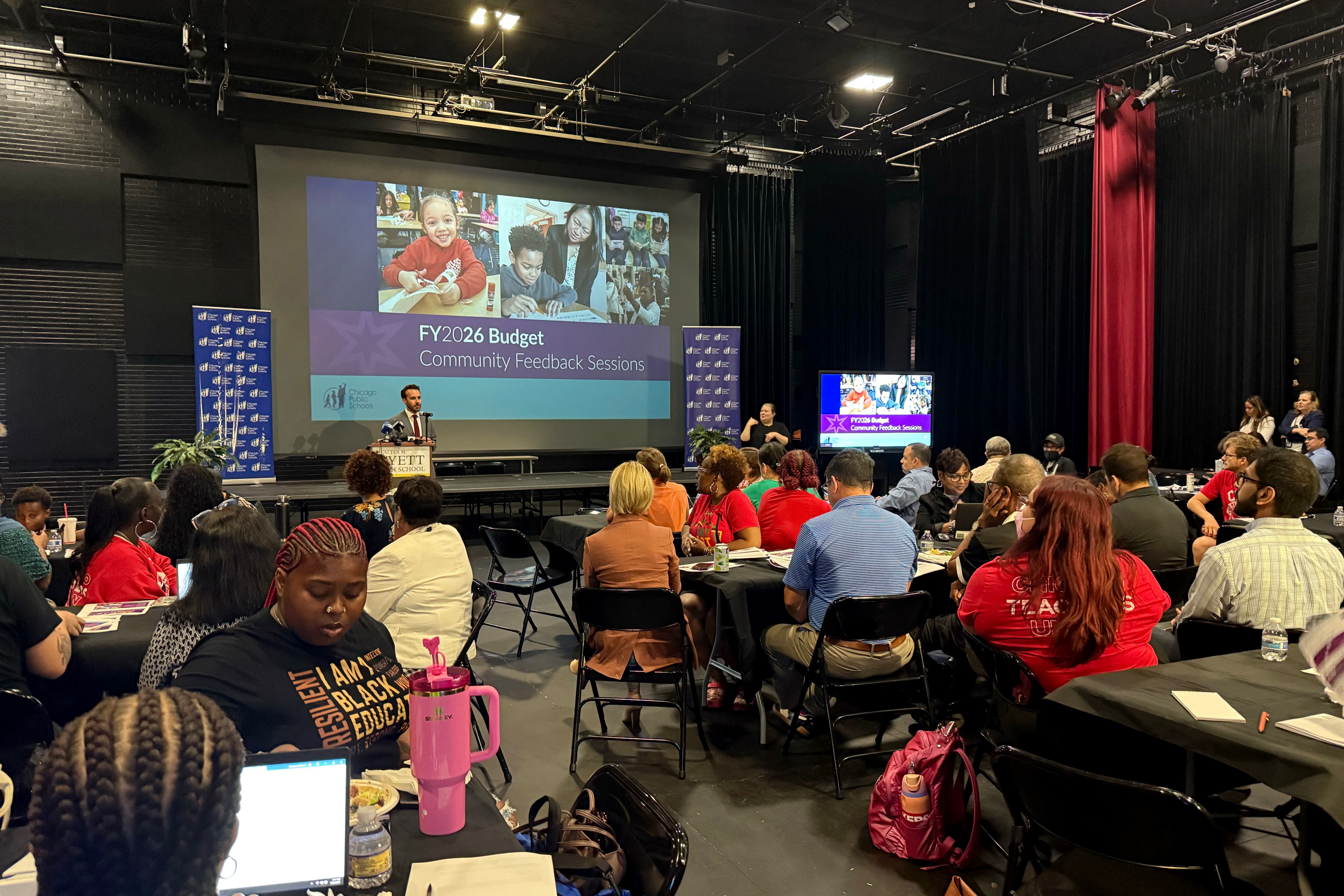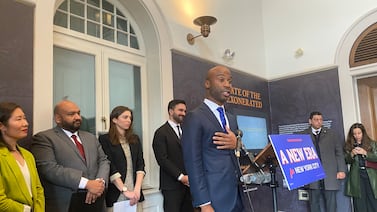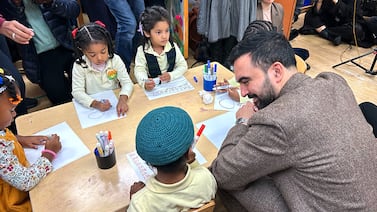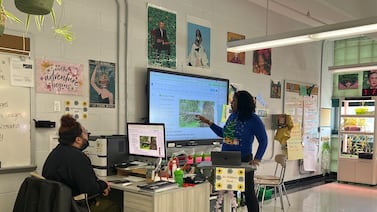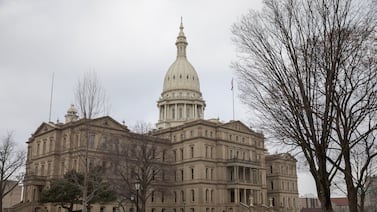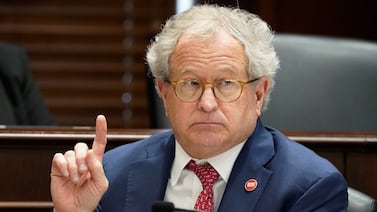Sign up for Chalkbeat Chicago’s free daily newsletter to keep up with the latest education news.
Chicago Public Schools has a $734 million problem.
That’s the size of the district’s budget deficit, which must be closed in the coming weeks in order for CPS to comply with state law requiring it to pass a balanced spending plan for the upcoming school year. District officials must release their budget proposal to the public by Aug. 13 for the board to pass by its Aug. 28 meeting.
Officials have not yet decided on how they’ll close the gap, but there are generally two approaches: Find more money, or make cuts. Last month, Chief Budget Officer Mike Sitkowski said CPS had so far reduced the deficit by $165 million through a series of layoffs and other cost-saving measures, leaving $569 million left to resolve. That number is now $519 million due to an unexpected $50 million increase in state money.
Even after the Board of Education passes a balanced budget this year, Chicago’s financial issues are not projected to go away. As it faces rising costs, CPS projects a $1.3 billion deficit by 2030.
So, where could CPS get more money? Are there expenses that can be cut?
Below is a list of various solutions that different groups, including CPS, civic organizations, and unions, have floated to close the gap.
This list does not include every idea but is meant to provide a small buffet of options. Some of these ideas are short-term fixes, meaning they solve the budget deficit this year but do not help increase revenue or reduce expenses down the road. Other ideas would provide long-term help, but may not help now. And many of the solutions would not be under the Board of Education’s control and would require another government entity to act.
All of the figures are estimates based on research done by advocacy organizations and budget experts who spoke to Chalkbeat. The numbers could fluctuate for different reasons. For example, it remains unclear how much CPS could actually issue in bonds. And the revenue potential from an additional tax on corporations would depend on how much corporations actually earn in the year that would go into effect.
Many of the timelines, including those that could take effect in fiscal year 2026, assume the soonest a government entity could take action on these proposals, but not necessarily if they would. For example, state lawmakers have not yet shown interest in calling a special session to address the district’s funding challenges.
Some officials, such as school board President Sean Harden, have made a case for a mixture of these solutions, such as borrowing money right now (a short-term fix) and pushing for more state revenue (a long-term fix).
What are the obstacles to solving CPS’ budget crisis?
What’s not reflected in the options above are the political challenges facing some of these ideas. For example, some organizations argue a progressive income tax is needed to generate more state revenue for schools and other public goods. But voters rejected the idea in 2020 in a 55% to 45% referendum vote on a proposed constitutional amendment. Some political and budget observers see less appetite at the state level to raise taxes and describe such proposals as an uphill battle.
We included the ideas on taxing corporations, which are different from income tax proposals, and assumed a scenario where lawmakers would funnel all of that new revenue into the state’s evidence-based formula, or EBF, which sends money to school districts based on their needs.
The idea about increases to EBF center around advocates’ call for a $550 million annual increase to the formula. That formula calls for an additional $1.6 billion for CPS to be adequately funded, and lawmakers set a goal to fulfill the formula by 2027 — but they’re projected to blow that deadline.
Another proposed solution is consolidating pension systems to free up more dollars available to go directly to classrooms. But it would require approval from state lawmakers and may be a hard sell to legislators who don’t represent Chicago, as well as the Chicago Teachers Union.
Similarly, borrowing money could come with logistical challenges. When CPS asks investors publicly to loan the district money — known as issuing bonds — there are legal limits to how the district can use that money and, in turn, how much it can ask for. The district also has a junk bond rating, similar to a bad credit score, meaning it would likely face high interest rates. Considering those factors and using estimates from the city and a municipal finance expert, we assumed the district would be able to borrow roughly $200 million without going a more private route, like to a bank.
Reema Amin is a reporter covering Chicago Public Schools. Contact Reema at ramin@chalkbeat.org.

